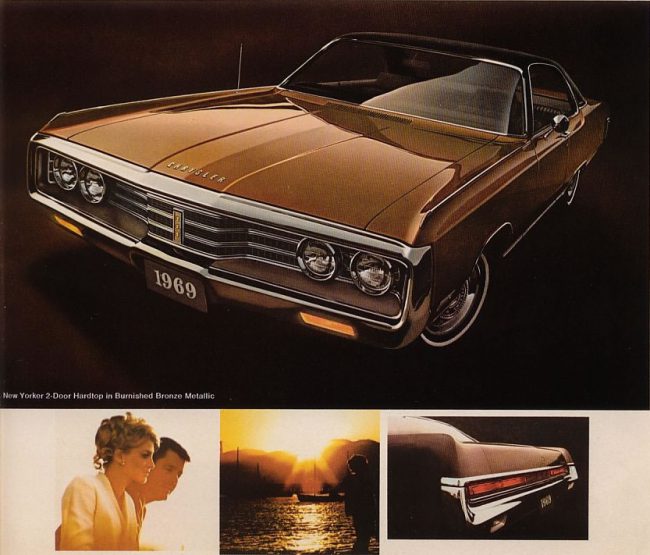
1969 New Yorker coupe
The Chrysler Corporation certainly had its share of ups and downs between the 1950s and 1970s. The shrunken and bizarrely-styled 1962 full-sizers (a misinterpreted response to the 1962 Chevrolet “Chevy II”) was the Airflow all over again.
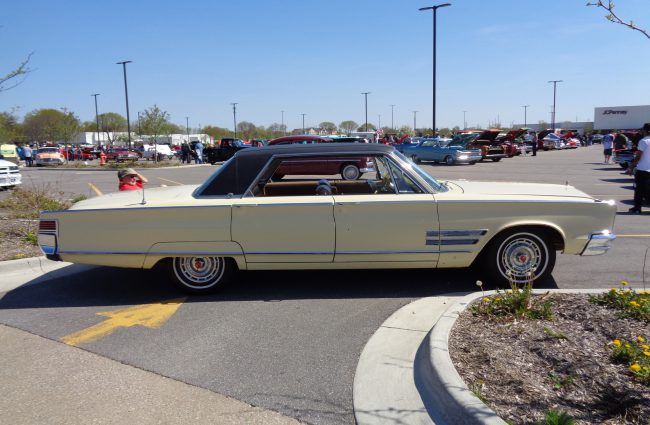
1966 Chrysler Three Hundred
Only the clean, attractive new full-size cars of 1965, courtesy of Elwood Engel’s deft hand, saved Chrysler’s bacon, and brought Mopar’s coffers back up to par. The 1965-68 Chryslers were well-made, handsome and brought back a fair share of luster to Chrysler’s pre-1957 engineering credibility.
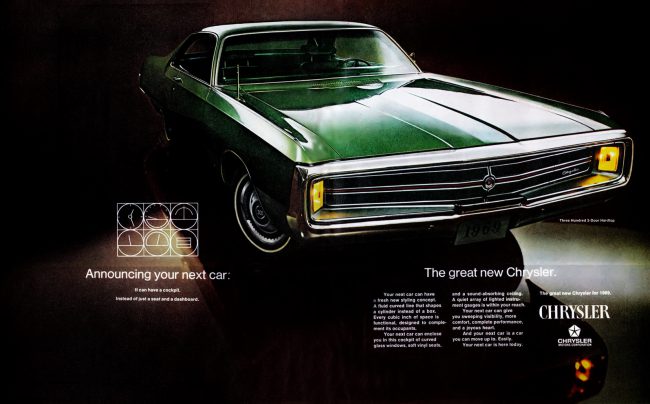
1969 Chrysler Three Hundred
So, why were they called Fuselage? Simple. As period sales catalogs and advertisements explained, the cars’ design was meant to recall aircraft design–a road-going 747, if you will. Their most prominent feature was a profile that was one consistent curve from the rocker panels to the roof.
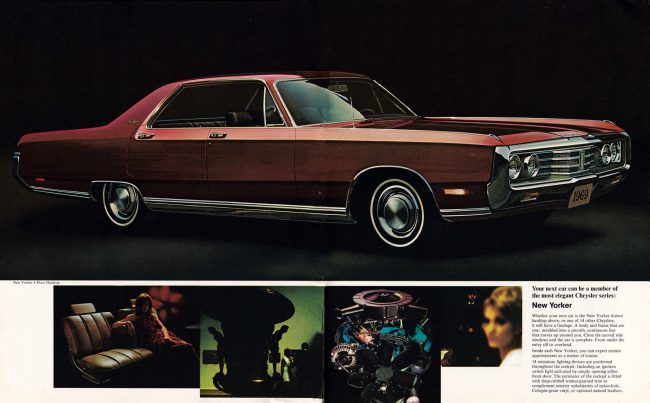
It was a big change, not only for Chrysler but for the industry, as the roofs of most contemporary domestic rolling stock appeared to be separate from the body, with a ridge between the tops of the fenders and the A, B and C-pillars.

I’ve always found the curved sides rather attractive. Unfortunately, approximately 82% of these cars had a vinyl roof, which effectively masked the car’s most prominent styling feature. At any rate, however, they quite cleanly styled in all variants.
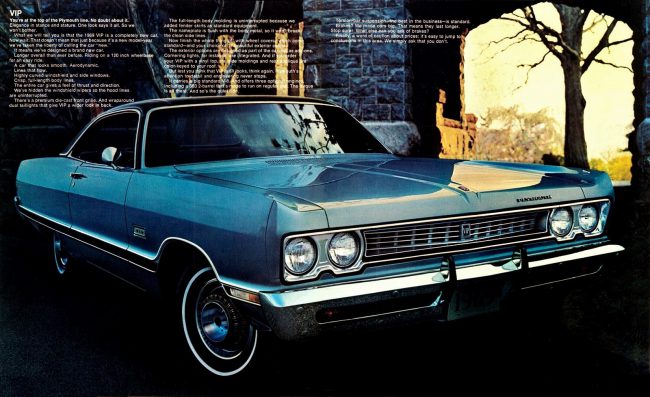
Though I must admit, the Plymouths had a bit of an anonymous look, unless it was a more heavily decorated Sport Fury or VIP. But I discussed the “Low Priced Three” version of the Fuselage Mopar last year. So let’s focus on the Chrysler version today, shall we?
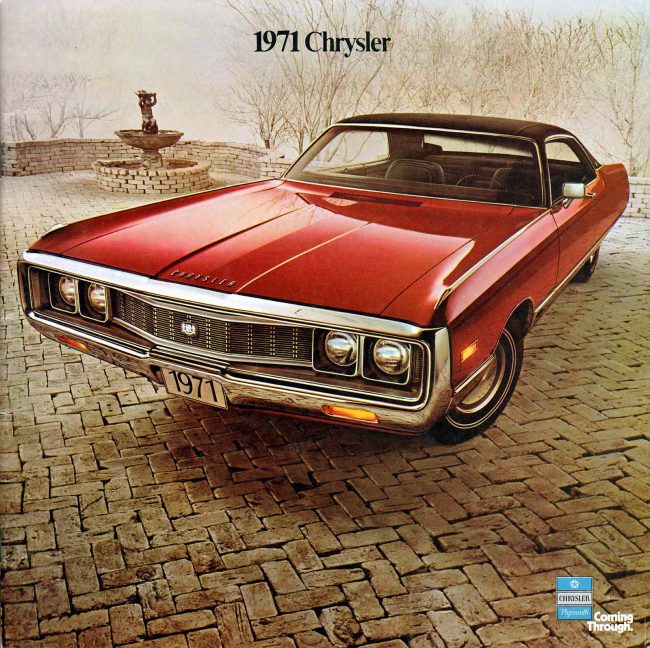
The new biggies looked good. Clean, modern, and with plenty of optional extras that folks wanted when shopping amongst the upper middle class brands: Chrysler, Buick, Oldsmobile and Mercury. But remember those intermittent Chrysler Corporation crises? Well, they were due for another one.
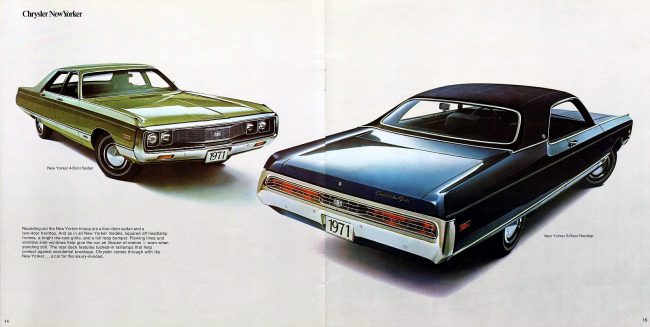
Yes, around the same time the fuselage C-bodies were introduced, a brand new period of panic presented itself at Highland Park corporate headquarters. Today, we can look back at cool cars like the E-body Challenger and Barracuda, Charger Daytona, Superbird, GTX and Road Runner and think, “Gee, Chrysler was at the top of its game with such a great lineup!”
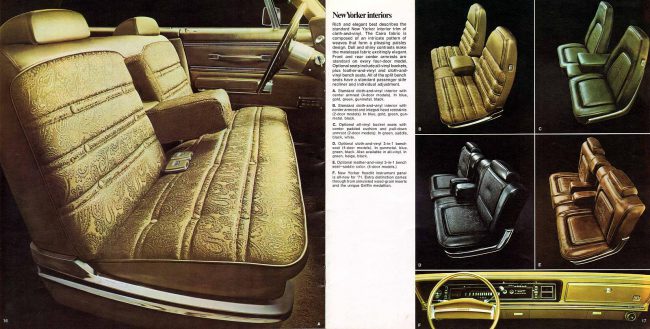
That wasn’t the case, however, as Chrysler started to experience slipping sales-once again!-starting in early 1970. The fuselage cars were not horrible sellers per se, but still were not meeting management’s high hopes for the all-new models: 260,771 full-size 1969 Chryslers were built. That was below 1968 Chrysler production of 264,863-and the ’68s were a three-year old design!
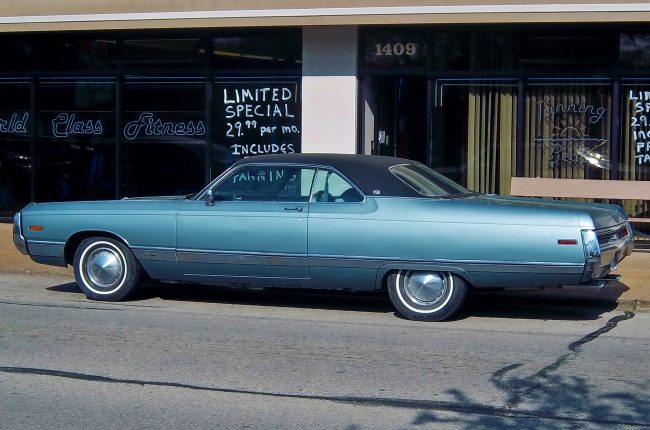
Things got much worse as 1970 advanced. Model year production dropped by 30%. Chrysler was, once again, moving from the “fat” years of 1964-68 to another all too common “lean” period. It didn’t help that Chrysler quality remained hit-or-miss despite the company’s efforts to shed the rusty tin can reputation that started with the rushed-into-production 1957 models.
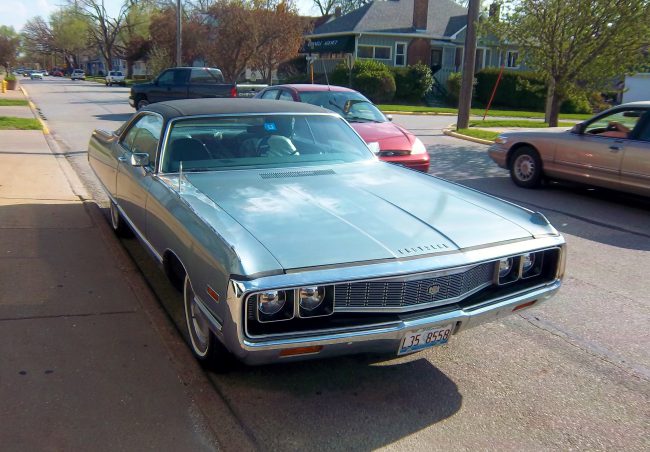
As I’ve been told by friends who are perpetual Mopar masochists fans (I kid, I kid!), if you got a good one, you got a REALLY good one. An excellent one, that would be excellently screwed together and provide years of faithful service. But if you got a bad one, you got a really, REALLY BAD ONE. Russian near-luxury car roulette, anyone? Sure, GM’s taken a beating from hackneyed bloggers over the past thirty years, but in the ’60s and ’70s, their reputation was still sterling. No one fretted about buying a new Electra or Ninety-Eight LS. With Chrysler, there was a little bit more concern.
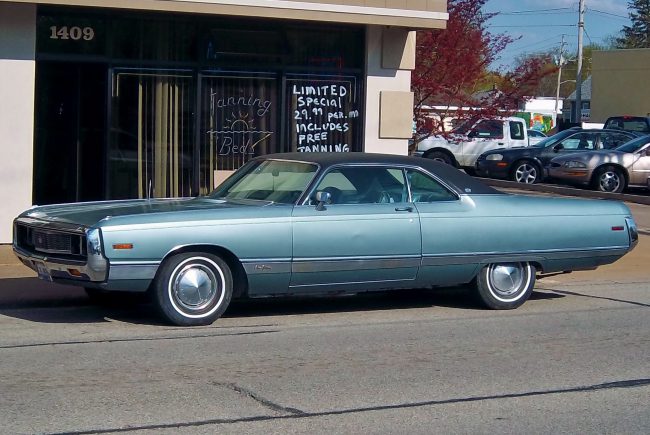
But enough of Chrysler’s corporate ups and downs; let’s focus on the car itself. There’s something about a Chrysler New Yorker that always catches my interest. In my opinion, “Chrysler New Yorker,” along with “Lincoln Continental” and “Buick Electra,” are among the upper echelon of great car names.
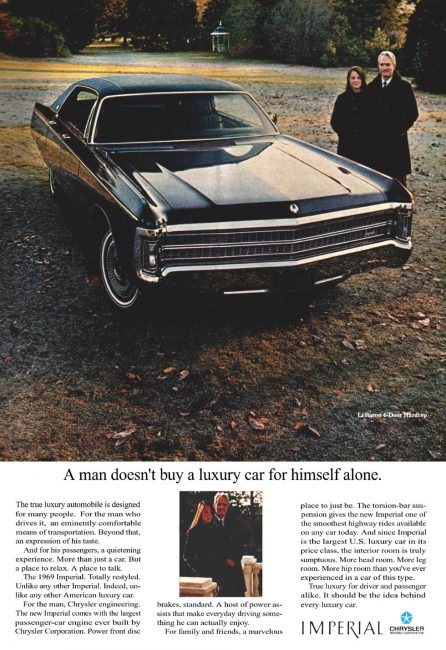
With the New Yorker, no matter the model year, you knew you were getting one of the plushest, most comfortable models in the Chrysler-Plymouth lineup. Only the pricey and low-production Imperial cost more.
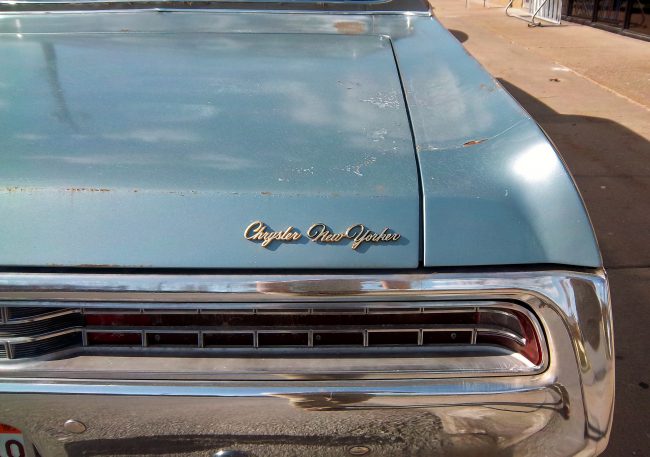
1971 was the last year for the original fuselage styling. Between 1969 and 1971, not much had changed for the New Yorker, beyond minor grille and taillight revisions and a few trim changes. The convertible had disappeared after 1970. For the 1972 model year big Chryslers would receive new sheet metal and a blockier roofline, but retaining a recognizable resemblance to earlier Fuselages.
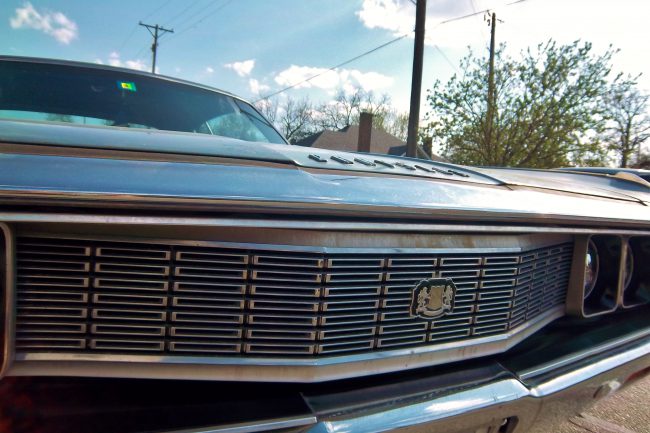
The New Yorker, as the top of the line Chrysler, had more trim and detailing than lesser Newports and Newport Customs. received a flossier, prow-like grille and gold-tone “New Yorker” emblems.
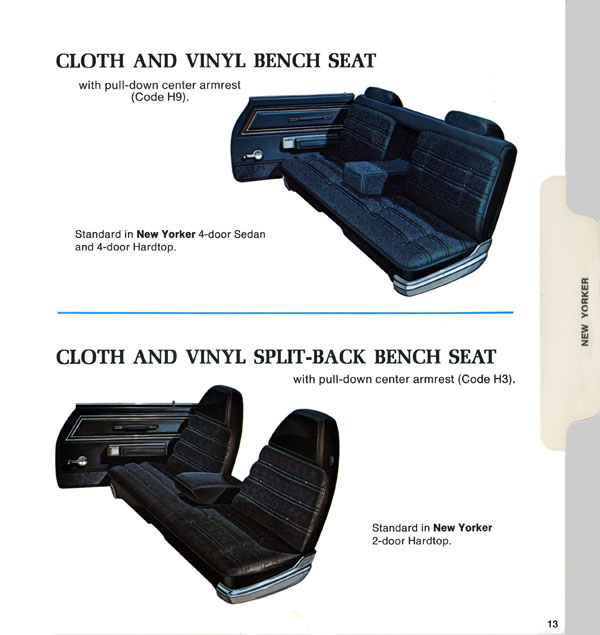
Other New Yorker features included wide, full-length chrome side moldings, plush Cairo cloth-and-vinyl upholstery, electric clock fender skirts, and more. The cheapest variant was the $5,555 four-door sedan, and the four-door hardtop, at $5,686, was the priciest. In the middle was the two-door hardtop coupe.
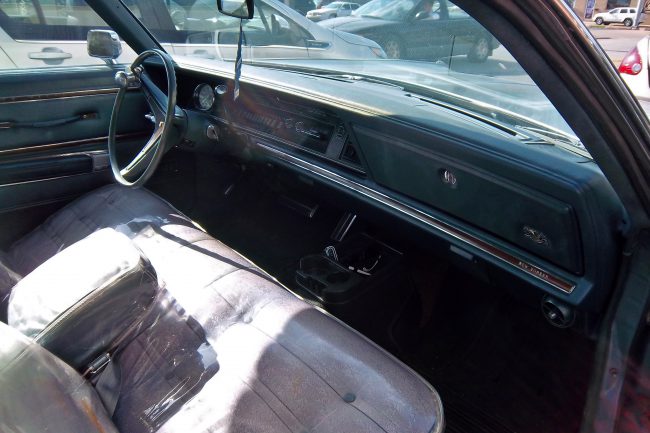
The coupe was also the least popular New Yorker, as only 4,485 were built. Even when new, these cars didn’t grow on trees. Indeed, any 1971 New Yorker is a find these days, since only 34,968 coupes and sedans were made for the model year. Every one of them had standard power brakes, power steering, and a 440 CID, 335-hp V8.
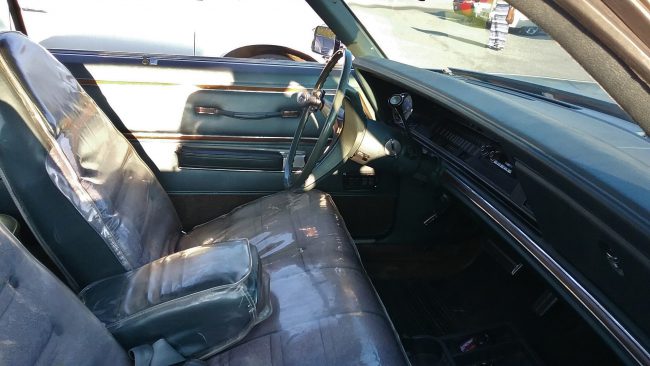
That 440 V8 is one of the reasons you don’t see many Fuselage Mopars anymore. Every dipstick wants a 440 in their rusty, piece of crap pickup or rusty, piece of crap Plymouth Duster. And since the big Chryslers are not particularly valuable, many, many New Yorkers, Imperials and Newports have had their big-block hearts ripped out by dubious means, for dubious people, and the remains unceremoniously crushed. Philistines.
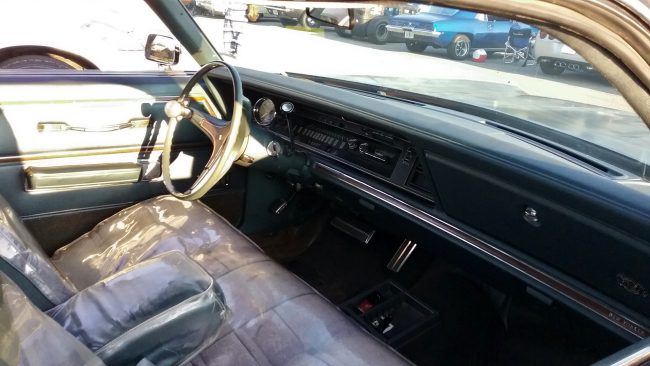
Many, along with their cross-town rivals from Oldsmobile, Mercury and Buick, were also lost to various and sundry demolition derbies. As I believe I have previously mentioned, philistines! A shame, as these cars are big, plush and comfy. They were top of the heap when new, with power everything, a smooth ride, and that oh so excellent V8 silently moving the owner to greater velocities, should he so desire.
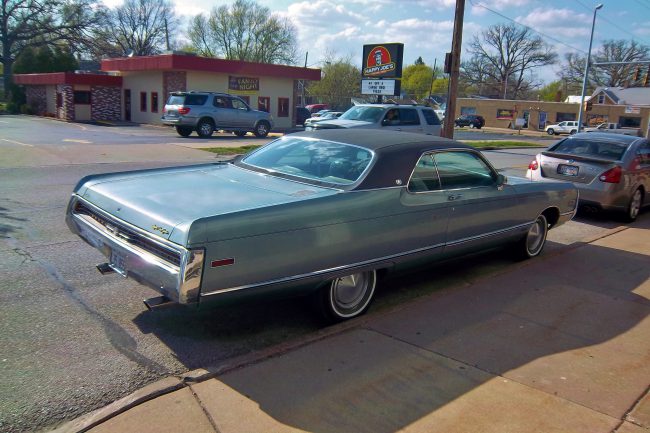
Yes, big! The 1971 Chrysler New Yorker hardtop coupe was 224.6 inches long, with an impressive 124-inch wheelbase. Interior room was unquestionably ample. Despite being the top-dog Chrysler (save Imperial, of course), plenty of options were available. Popular additions included factory air conditioning ($426; $501 with Automatic Temperature Control), and AM/FM stereo with cassette player ($407) and a tilt/telescopic steering wheel ($91).

So Klockau, you may be asking, what’s the deal with this car? Where in the hell did you find one? The date was May 1st, 2013. I was heading to the downtown Rock Island library after work, when I saw the nose of this car peeking around the corner while sitting at a red light. Holy crap! Well, what else could I do? I had to stop and document this rarity!
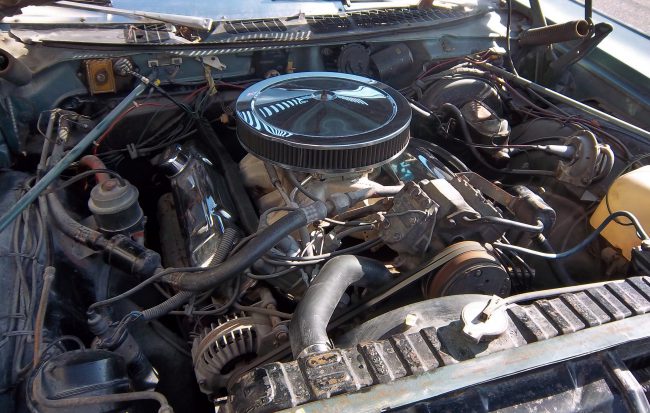
440 power!
As I was poring over this car, looking through the windows and walking all around it-and taking the many pictures seen here!-the owner came over, wondering what I was up to. He was happy to open up the car for better interior pictures, and even popped the hood and started it up for me so I could hear that wonderful big block Mopar burble! It sounded very healthy. He had owned the car for a few years, and other than a possible repaint in the original color, he was planning on keeping it just the way it is.
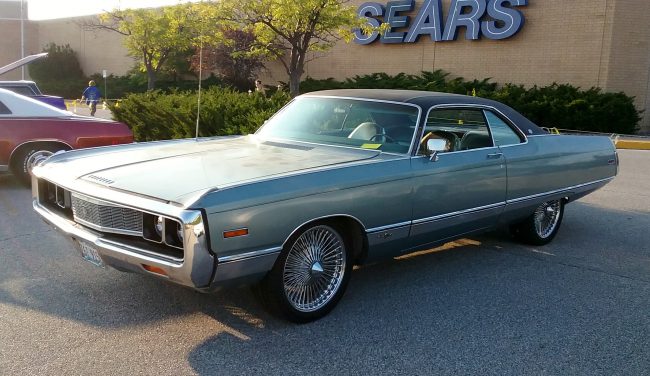
I was happy to meet another C-body fan. I don’t always get to meet the owners of the cool old cars I run across, unless I’m at an actual car show, so it’s always a pleasure when I can hear a little about the car I’m gawking at, and hear a little bit of its story!

And I ran across the car at a cruise-in just last fall. Other than a flashier set of wheels and tires, it looked just the same. And it still stands out among the me-too resale red Mustangs and Camaros. There’s just something about a Mopar product…
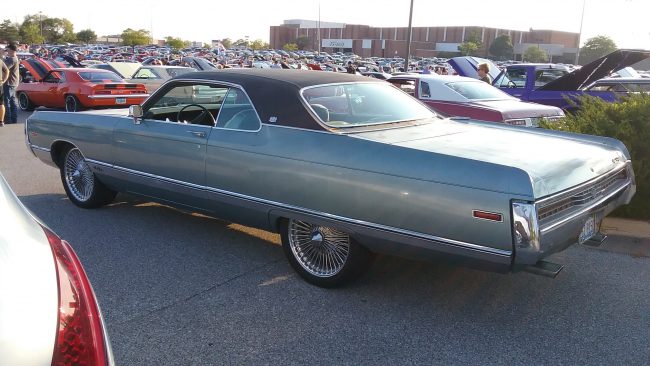

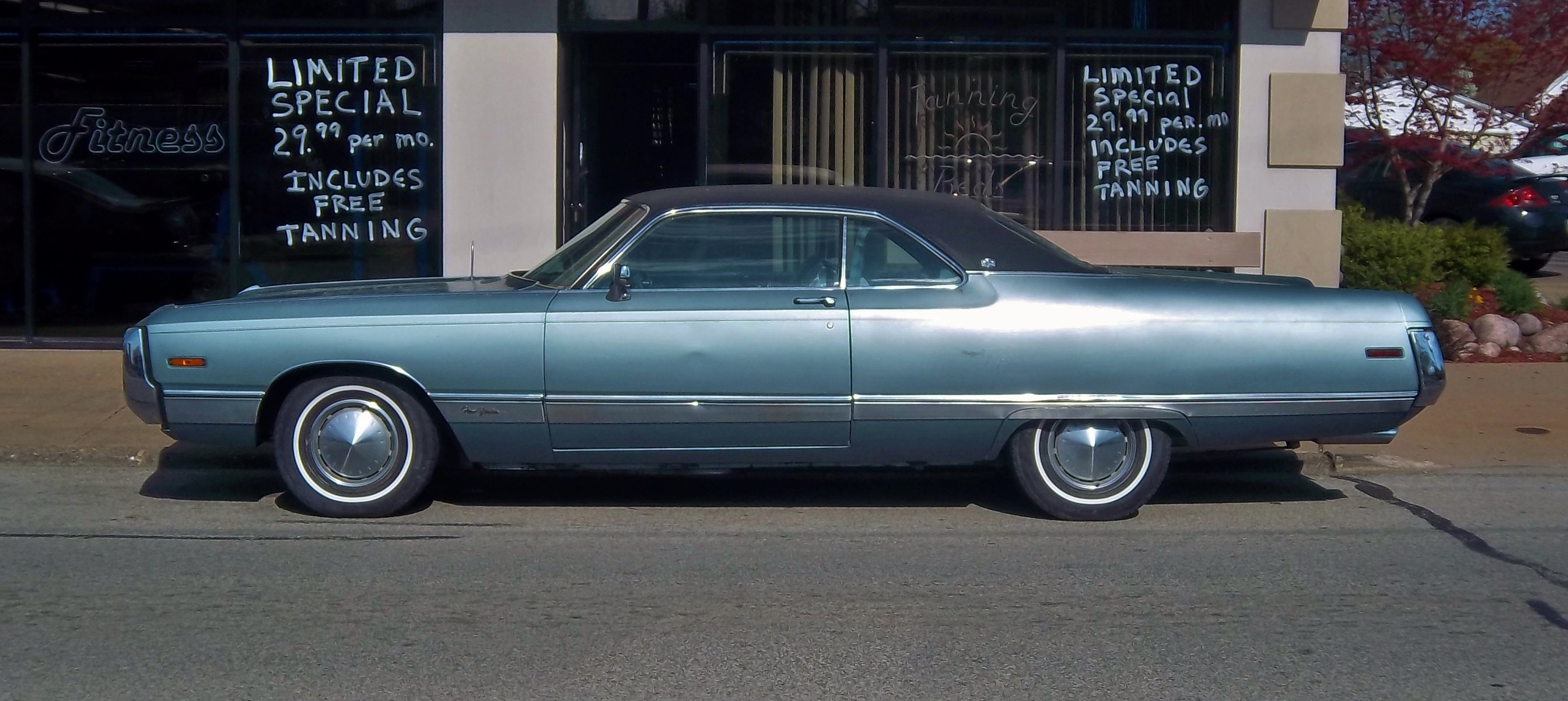






6 Comments
For a brief period in early 1977, I had a 71 “Big Apple”, AKA the Great White Whale. Yes it was white, and had plaid seat upholstery. I bought it from the widow of the original purchaser, who I think wanted the seats to match his golf pants. I didn’t pay much for the car, $900 IIRC. While it had no guts from a standing start, it would just keep accelerating until you chickened out. There were more than one occasion where the speedometer needle was past the 120 mark. Of course once you got up to that speed, you would sooner or later need to whoa that yacht down. That was when some real sphincter puckering would occur. Brake fade, even with the disc brakes, was a given. They worked fine at 60-80mph, not so much at 120.
I didn’t keep it very long though. I was working a mediocre paying job, plus going to night college AND getting ready to get married, and the cost to feed it was just too much(even at $.75 per gallon). 10 MPG (if you took it easy) plus driving around 110 miles a day meant fillups were a regular occurrence. Ended up using a Datsun to commute, and sold off my Whale to a neighbor (which his daughter wrecked about a year later).
Man, give me a fuselage-body 1970 Hurst 300 any day. Love ’em.
My uncle had a 70 or 71 in white. Touchiest brakes I’ve ever encountered. If you weren’t buckled in and hit the brakes hard you’d probably end up going through the windshield. Other than that it was a nice car.
My first wife’s father had a beautifully maintained 300 of that era that his father had purchased. The only good things left of that marriage are my Griswold cast iron skillet and memories of taking that fantastic car to the drive in.
I was never a fan of the fuselage style. It seems to me that style portends the modern jellybean, but maybe because as a teenager I drove the family hand-me-down 1965 Fury I. Ol’ Bessie wasn’t special but I think she had more character than the fuselage models.
Although the Imperial looks to be 20 feet long AllPar says the the 1971 models were 225 or 229 inches long. That’s comparable to a modern Super cab pickup with the 6.5′ box.
I also love me some Fuselage Mopar.
I hate to admit this, but a buddy of mine and I are guilty of taking one of these things off the road and converting it into a “race car”. A buddy of mine inherited his late uncle’s 1969 New Yorker sedan (with 440 & TorqueFlite). In 1985 it was a rusty old car and we needed something to race in the Street Stock division at the local dirt track. With the torsion bar suspension it was relatively easy to convert to circle track duty and the 440 was in OK condition. We threw some hi-po parts and a low rise 4 bbl intake on it, serviced the trans and installed a posi rear end on it. We took third place in our inaugural season, but the 100 mile Enduro race at the end of the year proved too much for the motor and we crapped out at lap 198…
We took the 440 out of the New Yorker, sat the New Yorker chassis out back of the barn and installed the drive train into a 1968 Dodge Coronet 4 door. We ran that combo for two years without major damage up until the third race in 1987. It took a pretty good shot to the side and we decided to move on to another Fuselage Mopar, a 1973 Plymouth Sport Sebring. Actually, that car wasn’t a rust bucket, but had a lame motor.
Same as before, we left the husk of the Coronet out back with the New Yorker and moved the drive train into the Plymouth. The Sebring was a pretty decent car for a 14 year old car in Northeast Ohio, not a lot of rust and it had been pretty well optioned. I felt bad ripping out the interior bits and cutting off the roof to install our homemade roll cage. We got a couple of races in that season before it ended, but no great results. We started out 1988 thinking we would do a complete season in the dirt, but our sponsor, a local small town Ohio Dodge dealer gave us a smoking deal on a new 1988 Omni with 2.2L and a 5 speed trans. We were going to go autocrossing…
So, yes, I’m partially responsible for killing three Fuselage vehicles, with nary a thought to the now rare glass and interior pieces we were cavalierly tossing into the bonfire or dumpster. Of the three, the Sport Sebring was the best and the most likely to make a decent road car. I can’t help but think back to the day we cut off the roof, thinking it wasn’t too late up until that moment to save this car…